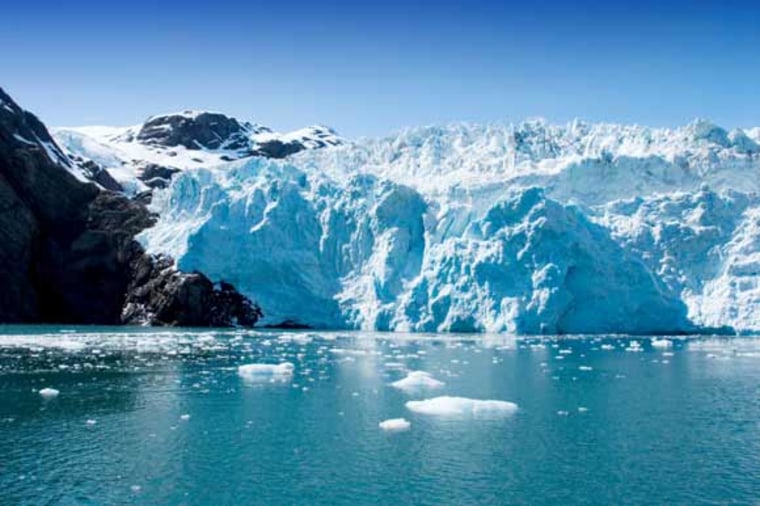A huge mat of oily goo caught everyone by surprise when it showed up off the shore of Wainwright, Alaska nearly two weeks ago. Since then, the mysteries have only deepened.
Preliminary testing showed that the goo was made of algae, even though it looked like an oil spill.
Yet, scientists still don't know what type of algae it is or where it came from. They don't know if it's dangerous to fish or other underwater life, nor do they know what chances are of something like this happening again anytime soon.
The list of mysteries is loaded with questions about whether the incident is related to climate change, pollution or simply a result of natural processes.
"We're still at the formative stages of looking at this and the practical issues, like what is it and what caused it," said Raymond RaLonde, an aquaculture specialist at the Alaska Sea Grant Marine Advisory Program at the University of Alaska in Anchorage.
The first news of the incident came from indigenous subsistence hunters on the morning of July 10, said Coast Guard Petty Officer Terry Hasenauer.
"Initial reports indicated that it was a substance that resembled heavy oil, crude oil or intermediate fuel oil," Hasenauer told Discovery News.
Investigations, however, revealed that there hadn't been any large ships in the area for more than a week, and there were no wrecks nearby. Still, the Coast Guard responded as they normally do to oil spills: by sending out two pollution investigators to fly over the blob and to approach it by boat.
Dispelling rumors that the substance was 30 miles long, the Coast Guard estimated its size as 13 miles by a quarter of a mile. It was floating about half a mile offshore. The blob was amorphous, Hasenauer added, broken up into globules and sections, and constantly changing shape.
The Coast Guard gathered samples and brought them back to Anchorage. When scientists observed the samples through a microscope, they immediately concluded that the goo was made of algae, not fuel.
"When we made the determination that it wasn't an oil and was some sort of other marine organism, people were shocked," Hasenauer said. "The Coast Guard and other environmental agencies and the locals all said they hadn't seen anything quite like that before."
Now, the real work begins. Samples of the algae have been sent to specialists at the University of Alaska in Fairbanks, who are trying to identify the species involved and are expected to release their findings this week.
The results should be telling, RaLonde said. If the goo contains blue-green algae, for example, that means that it came from a freshwater source, while brown algae and red algae live in marine waters attached to surfaces at the bottom. All of these species produce fatty acids that could explain the blob's oily appearance.
Once they know the source, scientists can begin to pin down their hypothesis for how the algal bloom formed. One possibility is that an influx of nutrients led to rapid algal growth beneath an anchored mat of algae, causing the mat to peel off and float to the surface. Blooms can also come out of freshwater rivers as salmon carcasses thaw out after a winter's freeze.
After his initial look through the microscope, RaLonde expects further analyses of the goo to show a mixture of algal species that includes a filamentous, or stringy type of diatom with long spines.
The final results will reveal whether the bloom is harmful. Some algae have abrasive spines that can shred a fish's gills and kill it. Others are poisonous to fish, birds, and mammals.
Algal blooms are already common in parts of Alaska, RaLonde said. They can grow quickly and become enormous. In one recent example, numbers of phytoplankton went from zero to 53,000 cells in two milliliters of water in just four days and got up to 812,000 cells per two milliters three days after that. Red tides can be as thick as ketchup.
As the climate warms, ice retreats and permafrost thaws, RaLonde expects a release of more nitrates into the water, which will fuel more long-lasting blooms, especially of blue-green algae. The blooms will also appear further north than they normally do now. Rising levels of pollution could even add more algae-fueling nutrients into the sea.
"Things are changing," RaLonde said. "I don't expect that this is the last time we will see something like this."
As scientists continue to examine the rapidly degrading samples, the goo is still out there, floating.
